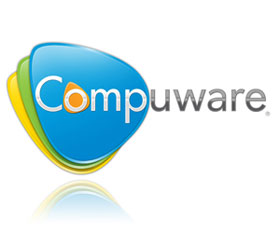Cleaning up your applications portfolio
One of the top five biggest business issues that many IT organisations wrestle with is trying to contain the size of the applications portfolio they are asked to manage.
Many organisations simply fail to take a hard look at which applications can be retired and, as a result, the cost of the IT infrastructure needed to support all those applications spirals out of control.
Here are some tips on how to rationally clean up the applications portfolio.
Set an objective before you get started
The first step to take before hitting your application portfolio is to set a goal and know your objective. Virtually every employee, process and transaction depends on an overly complex business application environment that has grown organically or through M&A over the past few decades with no overarching strategy. This ever-growing complexity has led to sky-rocketing maintenance costs with little to no room left for innovation and growth initiatives. In order to stay competitive, you need to be completely aligned with the business.
Take inventory and assess what you’ve got
Visibility is needed to gain a line of sight into your applications portfolio. Organisations are often spending 70 percent or more of their technology budget on “keeping the lights on” – some of which is used to maintain rogue and redundant applications.
Making a list of everything in your wardrobe will help you better determine what you’ve actually got and how you would like to see it organised. The same holds true for your applications. You also need an accurate and complete inventory of what’s in your overall applications portfolio to help you define a business and technical architecture to build toward. For each application, you’ll want to know where it resides, who’s responsible for it, how much it costs, the effort to support it, and its business value and associated risks.
Keep the classics, update the outdated, trash the obsolete
When we clean our closets, we review each article of clothing to determine which items still fit, which need to be tailored, and which are just plain out of style. Once you have reviewed and amassed a deeper level of understanding of the portfolio, you are now ready to decide which apps are getting good mileage and which are simply taking up space.
Categorise each application based on its criticality to the business and the complexity to support it. Ask yourself the question, “Is this application still delivering a competitive advantage and increasing efficiency?” Don’t be an applications packrat. If your answer is no, you may want to consider dumping it. If it is indeed critical to the business, you will want to mark it as an application to keep and possibly update.
Don’t go it alone
It is sometimes wise to enlist the support of an applications expert to help make decisions based on the business and cost value of your applications, thus removing some of the human element behind the decisions. Some experts will also use software to help with this analysis to drive even higher sets of standards.
But remember, not all applications are created equal. You will also need the business case and identification of investment options to fund the clean-up.
Clean, clean and clean!
Now that you have made the hard choices, it is time to clean that closet. Replace missing items from your wardrobe, repair favourites. And, if you are a creative type, be adventurous and invest in some new pieces.
With regards to your portfolio, this is the phase where you execute the roadmap you created for your applications. Each application is different and you may take a different approach based upon what is best for that specific application. You might re-host it to a lower-cost, higher-performance platform as an interim solution.
You may replace it with a packaged application. You may re-architect it by building a new application but leveraging the business logic in the legacy applications. Or, you might just retire it all together. Each of these strategies is effective and should be a part of your plan.
Continually celebrate your accomplishments
A one-time cleaning of your closet will not always keep it picture perfect. Continual cleaning is required via an organised approach, or things will fall into disarray once again. Celebrate each victory as you accomplish your ongoing goals. You roadmap should include individual projects that each provide value to your organisation.
Enjoy these victories, but stay on the path. Use application portfolio management (APM) software to continue to rationalise your portfolio on a regular basis. Your business will continue to change and now that you have a continual improvement process in place, IT can confidently free up resources for growth and innovation, and to better align itself with the business as a whole.
By Ashton Steyn, Chief Technology Officer and Agility Alliance Executive, HP Enterprise Services, South Africa


